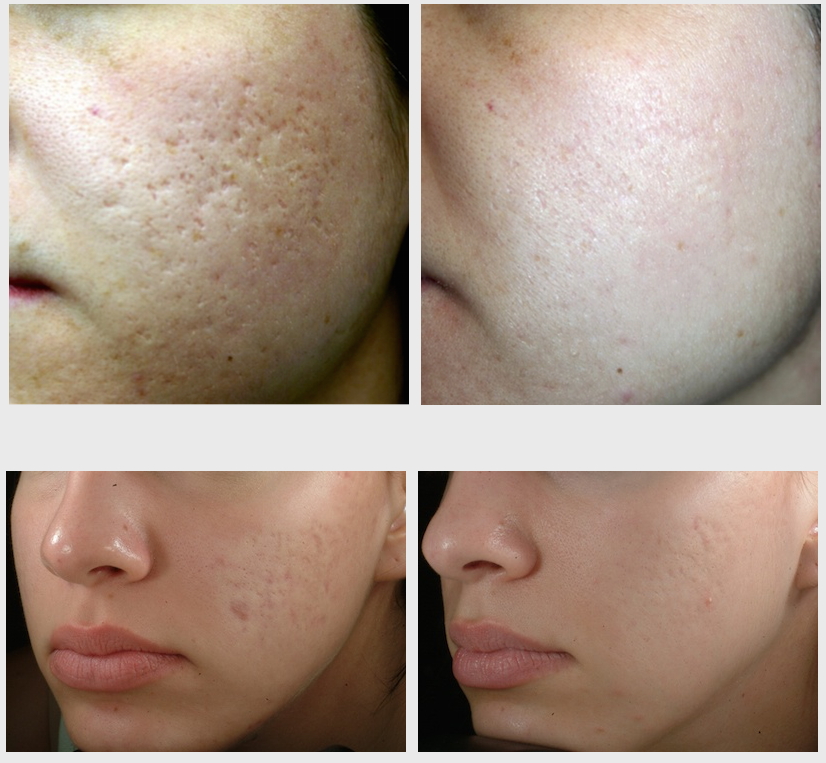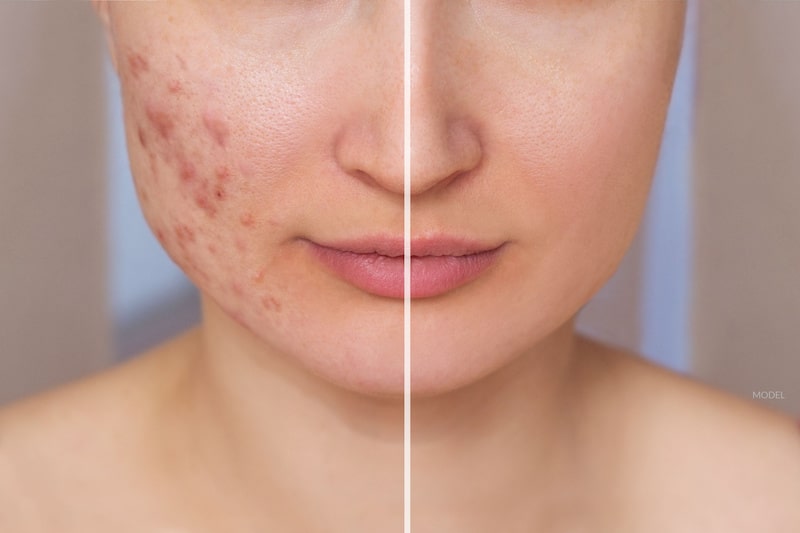Targeted Acne and Acne Scars Treatment: Redeem Your Clear Skin
Targeted Acne and Acne Scars Treatment: Redeem Your Clear Skin
Blog Article
Exploring Skin Problems: Recognizing and Dealing With Acne Scars for Healthier Skin
Acne scars represent a substantial problem for people seeking to maintain healthy and balanced skin, as they can impact both appearance and self-esteem. Recognizing the different sorts of marks, from atrophic to hypertrophic, is necessary for figuring out suitable treatment alternatives. While expert interventions like chemical peels and microneedling can be efficient, the significance of personalized treatment plans can not be overemphasized. Preventative measures play a critical function in minimizing future scarring. As we check out these facets, one need to consider just how the best approach can cause transformative results.
Recognizing Acne Scars
Recognizing acne scars is critical for anybody that has actually experienced serious acne, as these marks can have a long-term impact on both physical look and psychological wellness. Acne scars develop when the skin undertakes inflammatory responses during active acne sores. The extent of scarring is commonly influenced by variables such as the sort of acne, its duration, and private skin attributes.
The body's all-natural recovery procedure can cause either atrophic scars, which appear as depressions in the skin, or hypertrophic scars, which are increased and arise from overflow of collagen. Furthermore, the emotional toll of acne marks should not be ignored; numerous individuals report feelings of humiliation, stress and anxiety, and decreased self-worth. This psychological worry can influence social communications and overall quality of life.
Dealing with acne scars needs an extensive understanding of their development and influence. Awareness of the possibility for long-term consequences associated with neglected scars can encourage people to look for proper therapies. Early treatment and reliable management strategies can considerably improve skin look and boost emotional durability, highlighting the value of recognizing the intricacies surrounding acne scars.
Types of Acne Scars
Acne marks can be classified into distinct types, each showing one-of-a-kind characteristics and requiring details therapy strategies. The key kinds of acne scars include atrophic, hypertrophic, and keloid scars.

Hypertrophic marks, on the other hand, are increased over the skin degree and are the outcome of excessive collagen production during the recovery procedure. They normally continue to be within the boundaries of the original acne lesion. Keloid scars are similar however expand past the initial injury site, forming larger, increased locations that can be scratchy or agonizing.
Comprehending these sorts of marks is essential for picking suitable therapy alternatives. Different scars might react far better to specific treatments, such as laser therapies, fillers, or medical treatments, emphasizing the value of a tailored method to acne mark monitoring.
Recognizing Your Marks
Acne marks usually fall right into 2 groups: atrophic and hypertrophic marks. These can better be classified right into ice-pick scars, boxcar scars, and rolling marks, each displaying distinct features and needing different techniques for evaluation - skin rejuvenation treatments.
Hypertrophic marks, on the other hand, are increased and occur as a result of excessive collagen manufacturing during the recovery process. Identifying the particular attributes of your scars-- such as appearance, depth, and size-- is necessary for proper recognition. Additionally, think about the circulation of scars throughout your skin, as this can show the seriousness and period of the acne problem.
Engaging with a skin specialist can provide useful understandings into the nature of your scars, assisting in the distinction between different kinds. A thorough understanding of your scars will eventually bring about a more tailored and reliable therapy plan, guaranteeing a more clear and much healthier skin.
Treatment Options Offered
Determining the details kind of acne scars present on your skin prepares for discovering reliable therapy options. Common kinds of acne marks consist of atrophic (clinically depressed), hypertrophic (elevated), and post-inflammatory erythema.
For atrophic marks, check out here choices such as chemical peels, microneedling, and laser resurfacing are commonly utilized. Chemical peels off use acids to eliminate the outer layer of skin, promoting new cell growth.
Hypertrophic scars can be treated with corticosteroid shots to squash the mark or laser treatment to minimize inflammation and improve appearance. acne scars. Silicone gel sheets and pressure dressings might additionally help in handling raised scars
In enhancement, facial fillers can briefly fill up in anxieties from atrophic scars, while surgical excision might be proper for serious cases. Each therapy choice has its factors to consider and advantages, making it vital to talk to a dermatologist. They can provide tailored referrals based on the kind and intensity of your scars, as well as your skin kind and general health.
Tips for Avoidance
Efficient avoidance approaches can substantially decrease the chance of establishing acne scars. The initial action is to maintain a regular skincare regimen that consists of gentle cleansing, peeling, and hydrating. Utilizing non-comedogenic products aids stop clogged pores, which can exacerbate acne. Additionally, including topical treatments having salicylic acid or benzoyl peroxide can successfully handle outbreaks and reduce inflammation.
Preventing the impulse to choose or stand out acne lesions is important, as this can result in deeper skin damage and increase the risk of scarring. Rather, consider utilizing a cool compress or non-prescription therapies to minimize swelling and redness.
Sun security is one more essential facet of prevention; ultraviolet (UV) rays can darken scars and impede the healing procedure. Using a broad-spectrum sun block with a minimum of SPF 30 daily can protect the skin and promote even healing.
Last but not least, preserving a well balanced diet plan abundant in minerals, anti-oxidants, and vitamins sustains skin health and healing. Remaining hydrated and handling stress degrees can also play a considerable duty in decreasing acne flare-ups. By applying these techniques, people can significantly reduce their opportunities of developing acne scars.

Final Thought
To conclude, understanding and recognizing acne marks is essential for effective treatment and achieving healthier skin. Various types of acne scars, including atrophic and hypertrophic scars, necessitate specific interventions tailored to specific demands. Therapy alternatives array from chemical peels and microneedling to corticosteroid shots, highlighting the value of getting in touch with a skin doctor. In addition, embracing a gentle skincare routine and shielding the skin from UV direct exposure can dramatically add to the prevention of further scarring and overall skin wellness.
The body's all-natural healing procedure can result in either atrophic scars, which appear as anxieties in the skin, or hypertrophic scars, which are elevated and result from overproduction of collagen. They are further divided into three subtypes: ice choice marks, boxcar marks, and rolling scars. Acne scars generally drop website link into 2 classifications: atrophic and hypertrophic marks. These can additionally be classified right into ice-pick scars, boxcar marks, and Recommended Site rolling scars, each showing unique characteristics and calling for different strategies for evaluation.
Numerous types of acne marks, including hypertrophic and atrophic scars, demand particular treatments tailored to private needs.
Report this page